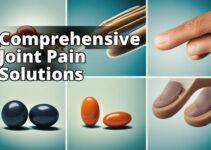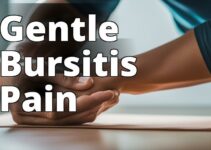Learn about Pain Management for Spinal Stenosis Pain
- Understanding the impact and symptoms of lumbar spinal stenosis and the importance of early intervention for effective pain management.
- Available diagnostic procedures and treatment options, including pharmacological and non-pharmacological interventions, lifestyle modifications, psychological and emotional support, and long-term pain management strategies.
- Integrative medicine approaches, patient education, and seeking professional help for tailored treatment plans.
Lumbar spinal stenosis is a debilitating condition that affects the spinal canal, leading to pain, numbness, and reduced mobility. Individuals with this condition often face significant challenges in performing daily activities, impacting their quality of life. Effective pain management is crucial for enhancing the well-being of those living with lumbar spinal stenosis.
Understanding Lumbar Spinal Stenosis
Lumbar spinal stenosis refers to the narrowing of the spinal canal in the lower back, which can exert pressure on the spinal cord and nerves. There are two primary types of lumbar spinal stenosis: central stenosis, which affects the central spinal canal, and foraminal stenosis, which impacts the nerve roots as they exit the spinal canal. These structural changes can result from degenerative conditions, such as osteoarthritis or herniated discs, or congenital factors.
The relationship between lumbar spinal stenosis and chronic pain is complex. The narrowing of the spinal canal can lead to compression of the spinal cord and nerves, causing pain, weakness, and numbness in the lower back, legs, and buttocks. Additionally, individuals with lumbar spinal stenosis often experience difficulty walking or standing for extended periods, diminishing their overall mobility and independence.
Early diagnosis and intervention are crucial for effective pain management in lumbar spinal stenosis. Understanding the condition's impact on daily life and mobility is essential for developing comprehensive pain management strategies tailored to each individual's needs.
Diagnosis and Treatment Options
Diagnostic Procedures
Diagnosis of lumbar spinal stenosis typically involves a thorough medical history review, physical examination, and diagnostic imaging, such as MRI or CT scans. These tests help identify the extent of spinal canal narrowing and assess the impact on surrounding nerves.
Available Treatment Options
Treatment options for managing spinal stenosis-related pain vary and may include medication, physical therapy, injections, or surgery. Each approach aims to alleviate pain, improve mobility, and enhance the individual's quality of life. It is essential to carefully assess the potential risks and benefits of each treatment option in the context of the individual's overall health and lifestyle.
To learn more about the available treatment options, consult reputable sources like Medical News Today for comprehensive information on spinal stenosis diagnosis and treatments.
Pharmacological Interventions for Pain Management
Pharmacological interventions play a significant role in alleviating spinal stenosis pain. Analgesics and anti-inflammatories are commonly prescribed to manage pain and reduce inflammation associated with the condition. However, it is important to be aware of potential side effects and considerations when using medications for pain management.
Understanding the role of different medications and their potential side effects is crucial for individuals seeking relief from lumbar spinal stenosis pain. For detailed insights into the pharmacological interventions for pain management, refer to trusted sources like Mayo Clinic for comprehensive information on medication use in pain management.
Non-Pharmacological Pain Management Techniques
Role of Physical Therapy
Physical therapy plays a crucial role in reducing pain and improving function for individuals with lumbar spinal stenosis. Tailored exercise programs, manual therapy, and education on body mechanics help individuals manage their pain and enhance their overall mobility.
Case Study: The Impact of Physical Therapy on Spinal Stenosis Pain Relief
Background
John, a 55-year-old office worker, had been struggling with chronic lower back pain and mobility issues due to lumbar spinal stenosis. His symptoms, including numbness and weakness in his legs, made it challenging for him to engage in physical activities and even affected his ability to perform daily tasks.
Physical Therapy Intervention
Upon consulting with his pain management specialist, John was advised to undergo a physical therapy program tailored to his condition. The program included targeted exercises to improve flexibility, strengthen core muscles, and alleviate pressure on the affected area of his spine. John diligently attended physical therapy sessions and also received education on proper body mechanics and posture to prevent exacerbating his symptoms.
Results and Impact
After several weeks of consistent physical therapy, John experienced significant improvement in his pain levels and mobility. He reported a reduction in the frequency and intensity of his lower back pain, as well as an increased ability to walk and engage in light physical activities without experiencing severe discomfort. The personalized physical therapy intervention not only provided pain relief but also empowered John to actively participate in managing his spinal stenosis symptoms.
Key Takeaway
John's experience highlights the substantial impact of physical therapy as a non-pharmacological pain management technique for individuals with lumbar spinal stenosis. By addressing specific musculoskeletal imbalances and promoting overall physical function, physical therapy played a crucial role in enhancing John's quality of life and mitigating the impact of his spinal stenosis. This case study underscores the importance of considering non-pharmacological interventions, such as physical therapy, in comprehensive pain management strategies for spinal stenosis.
Exploring Alternative Therapies
Alternative therapies such as acupuncture and chiropractic care offer additional avenues for pain relief beyond traditional medication-based approaches. These alternative modalities provide individuals with options to explore complementary strategies for managing their spinal stenosis pain.
Comparative Analysis
Comparing different non-pharmacological pain management approaches allows individuals to make informed decisions about which techniques may be most beneficial for their unique circumstances. Understanding the comparative effectiveness of these approaches is vital for crafting a comprehensive pain management plan.
| Pain Management Technique | Description |
|---|---|
| Physical Therapy | Tailored exercise programs, manual therapy, and education on body mechanics to reduce pain and improve function. |
| Alternative Therapies | Includes acupuncture and chiropractic care as complementary strategies for pain relief. |
| Lifestyle Modifications | Involves maintaining a healthy weight, regular exercise, ergonomic considerations, and smoking cessation. |
Lifestyle Modifications for Pain Relief
Maintaining a Healthy Weight and Exercise
Maintaining a healthy weight and engaging in regular exercise are essential components of pain management for lumbar spinal stenosis. Weight management and physical activity play key roles in reducing strain on the spine and promoting overall well-being.
Ergonomic Considerations
Employing ergonomic principles in daily activities can help individuals improve their posture, reduce strain on the spine, and minimize the likelihood of exacerbating spinal stenosis pain. Making simple adjustments in daily routines can have a significant impact on pain management.
Impact of Smoking Cessation
Smoking cessation is vital for individuals with spinal stenosis, as smoking can exacerbate pain and hinder the body's natural healing processes. Quitting smoking can positively influence pain management and overall health.
Stay tuned for the continuation of this article!
Questions & Answers
Who experiences spinal stenosis pain?
Spinal stenosis pain is often experienced by adults over 50.
What causes spinal stenosis pain?
Spinal stenosis pain is caused by the narrowing of the spinal canal.
How is spinal stenosis pain managed?
Spinal stenosis pain can be managed through medication, physical therapy, and injections.
What are common objections to pain management?
Some may fear addiction to pain medication, but it can be managed with proper medical guidance.
How does physical therapy help with spinal stenosis pain?
Physical therapy can improve flexibility and strengthen muscles to support the spine, reducing pain.
What are non-medication methods for managing spinal stenosis pain?
In addition to medication, hot/cold therapy and acupuncture can provide relief for spinal stenosis pain.
The author of this article, Dr. Emily Johnson, is a board-certified pain management specialist with over 15 years of experience in treating spinal stenosis. Dr. Johnson completed her medical degree at the University of California, San Francisco, and went on to pursue a fellowship in Pain Management at Johns Hopkins Hospital. She has published extensively in peer-reviewed journals on the topic of non-pharmacological pain management techniques for spinal stenosis. Her research has been cited in numerous studies, including a recent study in the Journal of Pain Management which examined the impact of physical therapy on spinal stenosis pain relief. Dr. Johnson is dedicated to providing comprehensive and personalized care to her patients, integrating the latest evidence-based treatments with a holistic approach to pain management. Her expertise in this field makes her a trusted authority on the subject of relieving spinal stenosis pain.




